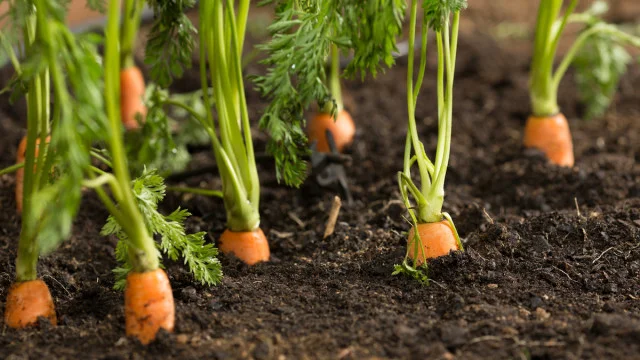
Carrots farming in Kenya is lucrative, especially if you plant hybrid varieties. Carrots are known for their numerous health benefits, such as promoting a healthy Vision and improving the health of your skin. Other benefits of growing carrots are:
- It aids in weight loss
- Helps in managing diabetes
- Carrots promote healthy bones
- It boosts the digestive health of your body system
Carrots can grow in various climatic conditions, from cold to hot. In Kenya, Carrots are mainly grown in Central, Coast, Rift valley, Western, Nairobi, and Nyanza areas. Carrots have several uses. You can cook them to add flavor to food or use them to create carrot cakes.
Ecological requirement of carrots
Carrots thrive best in cool to warm areas. Carrot farmers should avoid hot regions because the routes are sensitive to high temperatures. In addition, farmers should plant carrots in loose loam soil with a ph of 6 -6.5. You avoid planting carrots in poorly drained soil because it encourages the growth of bacteria, which can reduce yield.
You should plant carrots in areas with adequate rainfall or under irrigation. If grown in dry conditions, the carrot will start to crack because the roots are branching out in search of water.
Before planting carrots, ensure you have a soil test done by a reputable testing facility. In addition, get the services of an agronomist in Kenya who will guide you through the process to ensure maximum yields.
Should carrot farmers work with an agronomist?
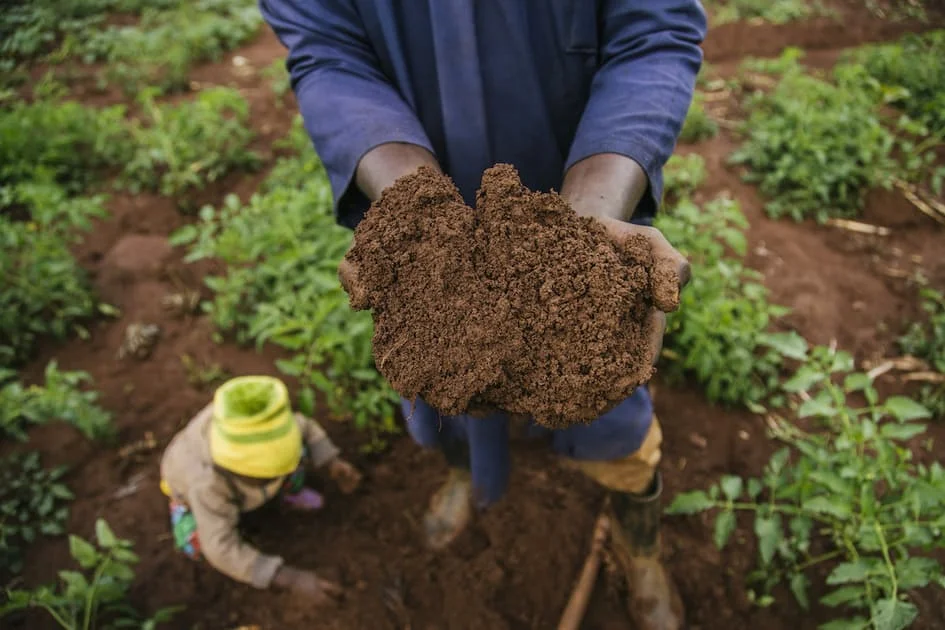
An agronomist in Kenya is a field officer or crop doctor who identifies pests and diseases and advises farmers on best farming practices. The main aim of an agronomist is to maximize yield and help you reduce post-harvest losses.
A good agronomist should be conversant with soil testing and how to interpret the testing results. In addition, agronomists should know different fertilizers and how they are applied to the plant. It is also important for an agronomist to be conversant with soil and water conservation practices to ensure that farms do not waste water.
After all, Only 3% of water found on earth is Freshwater. Out of the three percent of Freshwater in the world, 2.5% is unavailable. This is because it is locked up in the North and South Poles as glaciers and ice caps. This means that the world population can only consume 0.5% of all Freshwater found on earth.
Some of the benefits of working with an agronomist are
- They have better knowledge of crop production when compared to first-time farmers. This means they can help first-time farmers avoid costly mistakes.
- An agronomist can help you know which nutrients are deficient in the soil and which fertilizer to buy to make the soil nutrient sufficient.
- Agronomists are also knowledgeable in resource management and budgeting. This means they will advise whether your budget is realistic and how your limited resources can best be utilized.
Lastly, some export certifications require you to have a full-time agronomist on the farm. This, of course, depends on which country you will be exporting your products.
Carrot varieties, propagation, and planting
Carrot seeds are sown directly in the soil. Therefore, the soil must have a fine tilth. The soil should also be loose enough to enable the roots to penetrate at least 30 cm inside the soil. The best way to do this is to use a chisel plow. In addition, the soil should be bedded and raised to ensure proper drainage.
There are several hybrid varieties that carrot farmers can plant. The type of variety you plant will depend on your target market. For example, the Nantes variety is most suitable if you plan to grow carrots for the fresh market. This variety has a cylindrical shape, matures early, and has smooth skin that makes it marketable. The roots are also sweet and small.
Another variety is the Chantenay, which is suitable for the canning industry. It was first introduced in 1952 and can also be produced for sale in the market. Chantenay is a dependable variety that can grow in shallow soil types and heavy clay soils.
Other carrot varieties with good fresh market characteristics include the Touchon and Nebula F1.
Carrots are sown directly into the soil. Before sowing, ensure that the land is free of vegetative matter. This is because organic matter can attract pests and diseases. Also, ensure that the soil already has organic manure, such as Safi Sarvi. If you use commercial fertilizer such as NPK, apply 50 kgs per acre.
To plant an acre of carrots, use 2.5 kgs of seed. After planting, you should see germination within seven days.
Seed germination tests
Carrot farmers are advised to carry out seed germination tests before sowing. To germinate seeds, you need to wrap them with a ball of wet cotton wool and leave t for seven days. They are good if the seeds have a germination rate above 85%. Seed varieties that have a germination rate of below 85% should be discarded.
Carrot management
After three weeks of planting, the carrot must be thinned to ensure a spacing of at least 10 cm from one plant to another. This creates enough space for the Carrots to grow. Weeding should be done twice. The first should be when you are thinning three weeks after planting.
You should do the second wedding three weeks later, depending on the level of infestation. Care should be taken when weeding not to damage the carrot roots.
Husbandry
Farmers should practice crop rotation to reduce the possibility of soil born diseases affecting their crops. You should mulch the farm with rice straw or dried grass if the farm is dry. In addition, when the root starts to swell, eath the seedlings to protect them from direct heat and sunlight.
Another creative way of protecting the vegetables from direct sunlight is to plant them under a canopy of fruit trees. You kill both birds simultaneously because you get fruits and vegetables.
If the heat is too much and there is little to no rainfall, you should irrigate the farm. Failure to water the farm will result in low yields.
Carrot fertilization
The type of carrot fertilizer to apply will depend on the nutritional requirements of the soil and the growth stage. The main nutritional requirements of Carrots include nitrogen, potassium, and calcium.
Farmers should use organic fertilizer during base dressing. The fertiliser should be applied at the rate of 20 tonnes per hectare. It should have equal amounts of potassium and nitrogen {20:20}. To protect the seeds from leaching, only apply fertilizer when the carrots are at least three inches tall.
You should avoid nitrogen-based fertilizers during the growing phase because they are root vegetables. When nitrogen is applied, it will promote foliage’s growth at the root’s expense. Instead, farmers are advised to apply phosphate or potassium-based fertilizer. This is because they promote the development of roots, increasing yield.
Another important nutrient is sulfur. Sulfur is important because it helps in the formation of chlorophyll. This is a green pigment that plants use to make food using a process known as photosynthesis.
Calcium-based fertilizers are also important because it enables carrots to deal with biotic and abiotic stress. In addition, calcium also regulates enzymes, Increasing the structural stability of the cell membrane.
Carrot Intercropping
Carrots can be intercropped with other crops, such as capsicum, lettuce, and tomatoes. It can also be intercropped with small peas, onions, garlic, and dwarf beans. An example of a good intercropped system is planting leeks with carrots. Carrots have deep root systems, while leaks have superficial root systems.
In this case, the carrot roots will utilize nutrients found deep in the soil, while leek roots will consume nutrients found on the soil’s surface. Another benefit of intercropping carrots with leeks is that leeks are a natural repellant for flies, while carrots are a natural repellant for worms.
Harvesting Carrots
Carrots should be harvested when the soil is moist and soft. They are harvested by pulling out the roots at the leaves. Depending on the variety, they are ready for harvesting within 60 -90 days. Mature carrots should have an orange color with a blunt tip.
Carrot production per acre
The production capacity of Carrots per acre will depend on several factors. One of them is the hybrid variety used. This article will use the Dubbed Nantes hybrid variety as an example.
If all planting conditions are optimal, this hybrid variety should produce 17 tons per acre within 100 days. Dubbed Nantes is a hybrid variety produced by Kenya Highland Seed Limited. It is disease resistant, has high vitamin content, and has a deep orange color.
Another good thing about this seed variety is that it is highly resistant to diseases such as powdery mildew. Powdery mildew can destroy 100% of all carrots on the farm. The farmer will require 2.5 kgs of seeds to plant an acre piece of land. This seed variety has a shelf life of 100 -150 days when stored at temperatures of 1- 4 degrees centigrade.
Carrot pests to know about
One common pest every farmer needs to keep an out for is the root-knot nematodes. It is considered one of Africa’s most serious parasitic nematodes because it can reduce yields by up to 40%.
This pest affects many crops, such as cowpeas, tomatoes, and carrots. Affected crops have stunted growth, are yellow in color, wilt, and die. When you pull the affected plants, you will realise that the roots are distorted, swollen, and have lumps all over. This pest mainly attacks plants during the flowering, rooting, and seedling stages. Other carrot pests to know about are
Cutworms
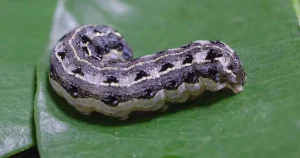
Two types of cutworms are known to attack carrots. The first is the black cutworm, and the second is the turnip moth. Cutworms feed on the roots, causing small and large superficial holes that reduce the crop’s marketability.
One way to control this pest is to conserve and control natural enemies. Natural enemies are animals that feed on other smaller animals. Examples of natural enemies include ladybug beetles, predatory birds, spiders, wasps, and predatory mites.
A carrot farmer should ensure they plow thoroughly to expose the cutworms to predators. Also, ensure that you destroy weeds and organic vegetation before planting carrots. Finally, a farmer can control cutworms by spreading ash in the seed beds and around the seedlings.
African Armyworm

The African army indirectly injures the carrot crop by destroying the stem or foliage. The crop cannot produce enough food when foliage is destroyed, reducing yields.
The African armyworm is also known as a caterpillar. It is an invasive species because the female can lay 10 – 300 eggs on the leaves of a plant.
This invasive species has a short life cycle, higher reproductive rate, and mobility. In addition, caterpillars are not easy to detect, and in most cases, when you detect them, they have already caused massive losses.
The best way to control the African armyworm is to spray BT or botanicals such as pyrethrum extracts and neem. The caterpillars should be sprayed when they are young. When the caterpillars are 3 cm long, they could have already caused massive losses, making it uneconomical to spray the farm.
Another strategy would be to conserve and encourage the growth of natural enemies such as beetles and birds.
Carrot diseases to know about
One common carrot disease is the cottony soft rot disease. It is caused by a fungus known as sclerotinia, known for its black cottony fungal growth on the leaves. The disease will affect stored crops if the farmer unknowingly packs infected crops.
The best way to protect your farm from the cottony soft rot disease is to practice crop rotation at least once every three years. Crop rotation should be done using forage grasses and cereals. If the disease has affected a large portion of your farm, it is advisable to flood the area to kill it.
Farmers are also encouraged to avoid packing or storing deceased roots. The carrots should be maintained at zero degrees with a maximum humidity level of 95%. Other carrot diseases are
Leaf blight
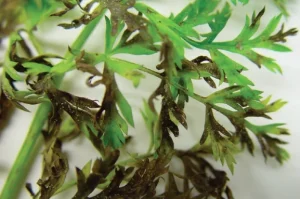
This disease is caused by a fungus known as Alternaria Dauci. The disease causes dark-grey angular spots on the leaves. The angular spots can also be brown. The tissue that surrounds these angular spots yellows and eventually dies. Leaf blight disease is a seed-borne disease that survives in the soil.
One way to control this disease is to use disease-resistant varieties. Carrot farmers are encouraged to use hot water treatment to control this disease. Hot water treatment is ideal for controlling diseases such as black rot, black spot, black leg, bacterial leaf streak, and anthracnose.
The treatment can also be used on other types of seeds such as
- Cauliflower
- Bananas
- Kale
- Eggplant
- Broccoli
- Spinach
- Pepper
- Mango
Hot water treatment also prevents other seed-borne diseases, such as bacterial spots and leaf streak disease. Before implementing this treatment, farmers need to have a thermometer to ensure the recommended temperature is not exceeded.
Farmers need to ensure that the treatment has not damaged the seeds. To do this, you need to do an examination test using 100 heated and 100 untreated seeds. If the heated seeds have a germination rate of 85% and above, they are still good for planting.
However, if the germination rate of both the unheated and heated seeds is below 85%, there is a problem with the bought variety.
The procedure for hot water treatment is as follows.
- Put water in a large pot and heat to the recommended temperatures
- Place the seed in a cotton bag {Loose} and submerge in the heated water. The temperature must be maintained throughout the heat period.
- As the water heats, stir it while submerging the bag. Ensure it does not touch the pan
- When the heating period is over, remove the bag and cool it in cold water.
- Remove the seeds from the bag and let them dry
- You should sow treated seeds immediately.
Powdery mildew
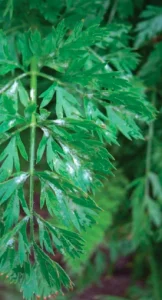
This disease causes infected plants to become chlorotic; they develop a white powdery fungal growth on the leaves. Powdery mildew is caused by a fungus known as Erysiphe polygon, a seed-born disease.
One way to control powdery mildew is to plant certified disease-free seeds. If you are using your seeds, remember to treat them with hot water. You should also practice good farm hygiene, overhead irrigation, and use sulfur-based products.
Pythium
Pythium is a dumping-of disease caused by several types of pathogens. This pathogenic disease causes the seeds to rot before they even emerge from ther soil. The disease mostly spreads when you do not use certified seeds or excessively water the farm.
To fight this disease, a farmer should water the seed bed sparingly. Also, only plant-certified disease-free seeds.
Bacterial soft rot
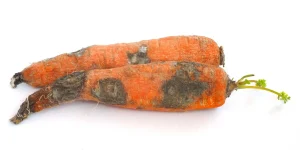
This is a bacterium known as Erwinia caratovora. It thrives best in decaying refuse and infects the roots through insect openings, bruises, wounds, and injuries. The disease mostly spreads when there is high humidity. It will also infect the farm if it is waterlogged.
A watery, soft slime rot is a sign of bacterial soft rot. The rotted part is usually grey to brown and produces a foul odor. A carrot farmer should practice crop rotation with crops such as grasses and cereals.
You can also tame the disease by storing harvested carrots in a well-ventilated space and destroying infected plants.



